 Well, it's not gurgling here and this isn't an ordinary downspout. It's a gargoyle and it is located on the famous Sainte-Chapelle chapel, just around the corner from the Notre Dame de Paris. It is a marvelous combination of stained glass, stone and air. It's not on the "normal" tourists stops so you'll have to make special efforts to get there. Interestingly, its inside the main judicial complex in central Paris so you'll also have to go through metal detectors.
Well, it's not gurgling here and this isn't an ordinary downspout. It's a gargoyle and it is located on the famous Sainte-Chapelle chapel, just around the corner from the Notre Dame de Paris. It is a marvelous combination of stained glass, stone and air. It's not on the "normal" tourists stops so you'll have to make special efforts to get there. Interestingly, its inside the main judicial complex in central Paris so you'll also have to go through metal detectors.
One of the architectural features of many Gothic churches are the carved downspouts, known as gargoyles. And the sound of water rushing through the monster's mouth was described as a "gurgle," a word derived directly from the name of these conduits.

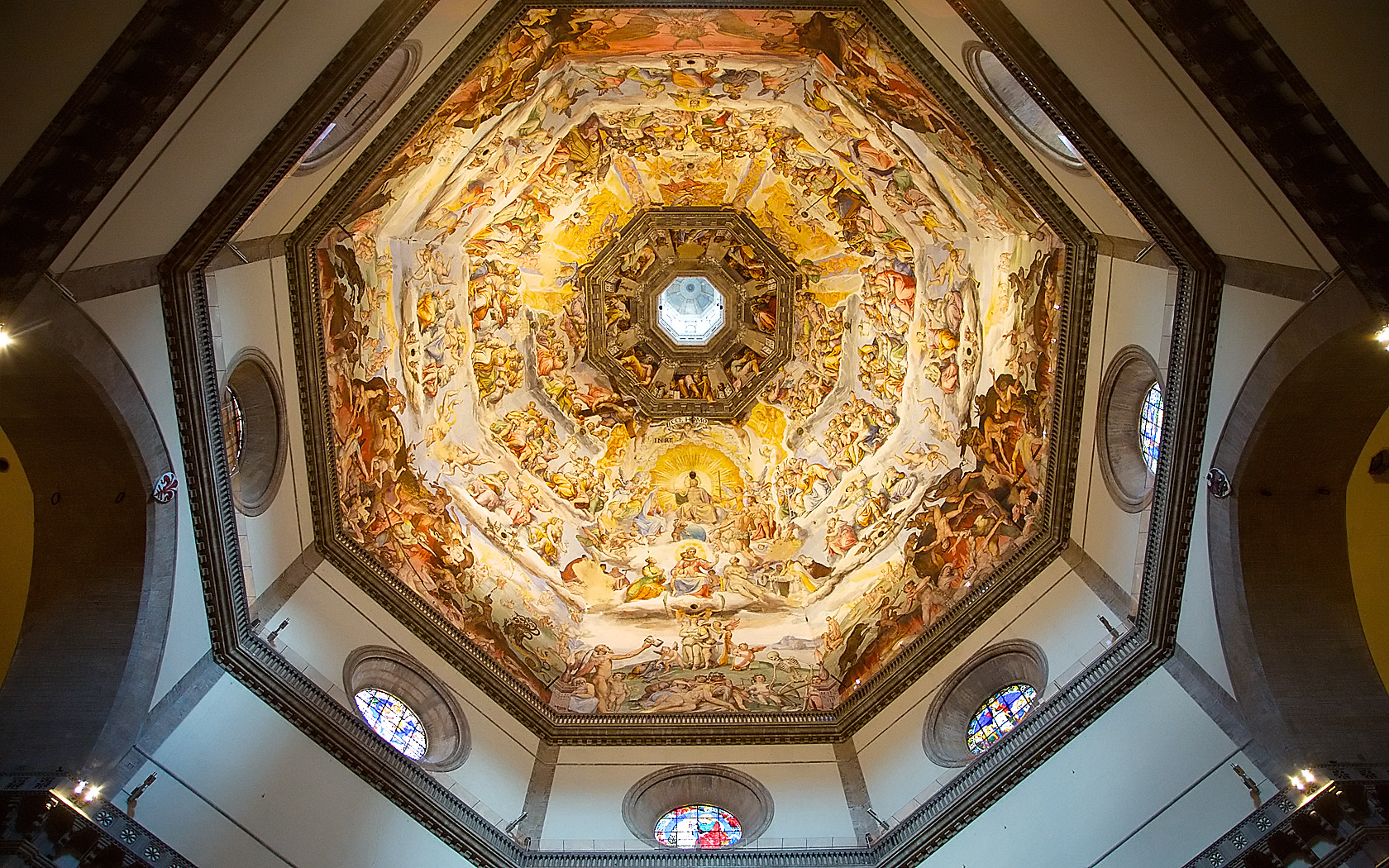 This is the inside view of one of the most famous domes in the world. It was designed by Brunelleschi and the exterior dominates the skyline of Florence. The exterior is what every visitor to Florence sees but many don't take the time to step inside the famous Duomo. The interior is difficult to photograph because it is fairly dark. But it is certainly worth the visit.
This is the inside view of one of the most famous domes in the world. It was designed by Brunelleschi and the exterior dominates the skyline of Florence. The exterior is what every visitor to Florence sees but many don't take the time to step inside the famous Duomo. The interior is difficult to photograph because it is fairly dark. But it is certainly worth the visit. To get an idea of the scale of this dome, look closely for the people standing on the walkway around what is called the "lantern." I've never been to the top of this dome but it's on my list.
To get an idea of the scale of this dome, look closely for the people standing on the walkway around what is called the "lantern." I've never been to the top of this dome but it's on my list.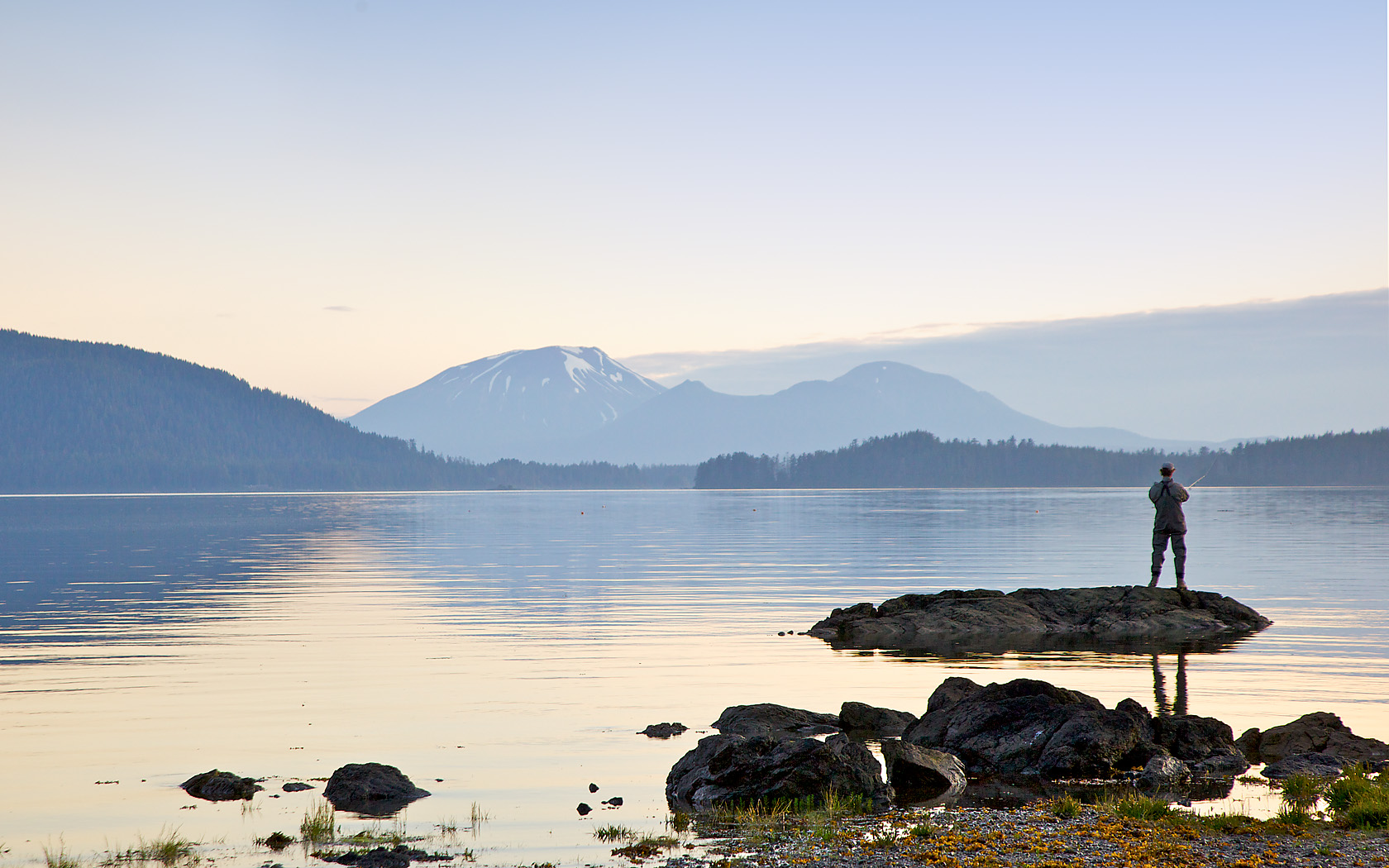 I read somewhere that for every day we spend fishing we should add a day to our lives and for every day we spend golfing we should take a day away. I guess it has something to do with the relative stress and frustration of the two activities.
I read somewhere that for every day we spend fishing we should add a day to our lives and for every day we spend golfing we should take a day away. I guess it has something to do with the relative stress and frustration of the two activities.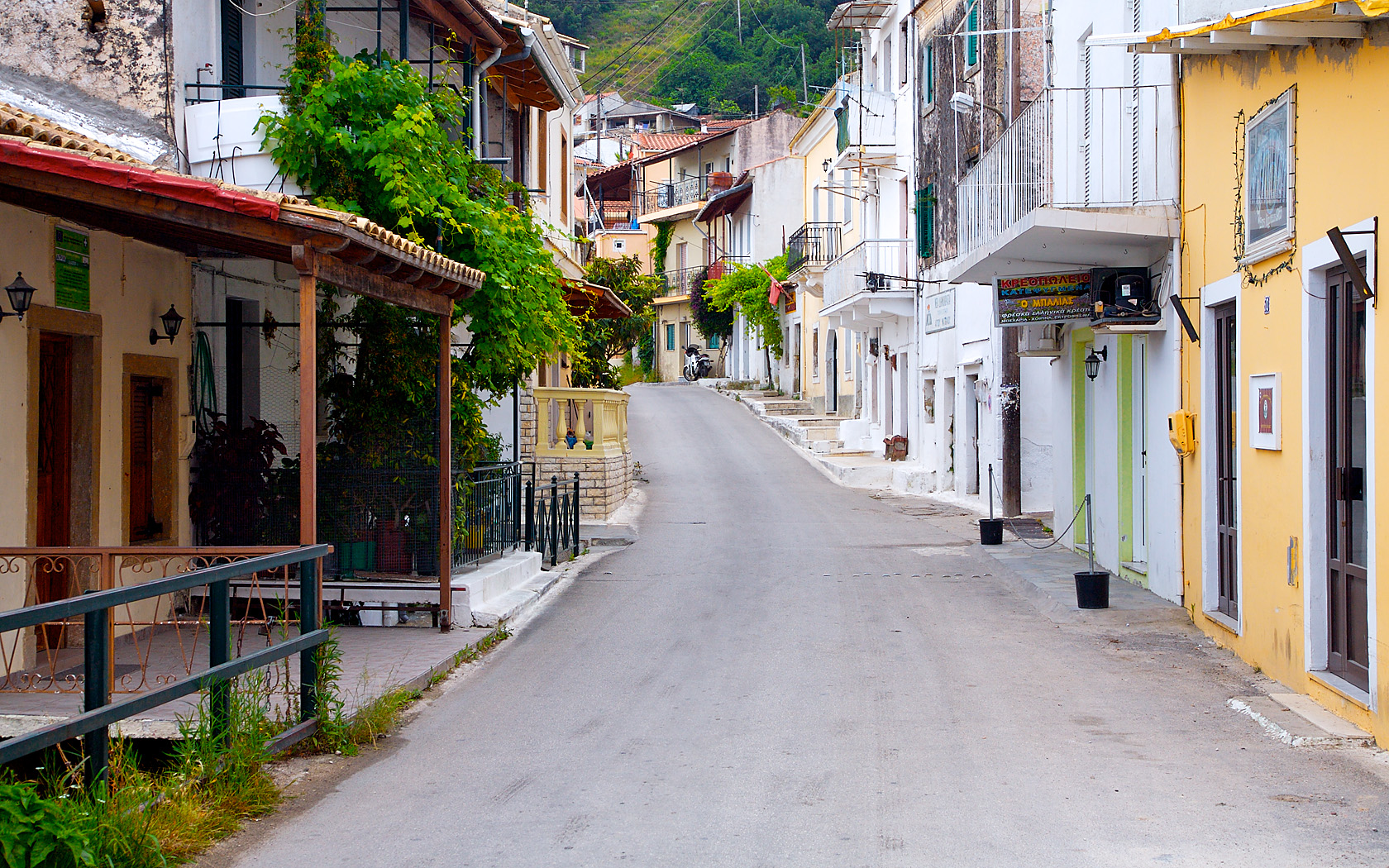 This is a shot that I took through our rental car window as Deb and I drove through a small village on the island of Corfu. Europeans drive much smaller cars than many Americans, in part because fuel is more expensive but also in part because less space is devoted to autos - such as this road which, to me, looks more like a alley.
This is a shot that I took through our rental car window as Deb and I drove through a small village on the island of Corfu. Europeans drive much smaller cars than many Americans, in part because fuel is more expensive but also in part because less space is devoted to autos - such as this road which, to me, looks more like a alley. I would have to say that in my opinion St. Peter's in Rome takes the prize as "Most Photogenic Interior." I have been looking at my photo collection, and I have a disproportionate number of the inside of this awe inspiring structure. There is so much to look at, I wonder if paying attention to the Mass would be secondary? I do know that one of the Calvinist reactions against Catholicism concerned adornment.
I would have to say that in my opinion St. Peter's in Rome takes the prize as "Most Photogenic Interior." I have been looking at my photo collection, and I have a disproportionate number of the inside of this awe inspiring structure. There is so much to look at, I wonder if paying attention to the Mass would be secondary? I do know that one of the Calvinist reactions against Catholicism concerned adornment. 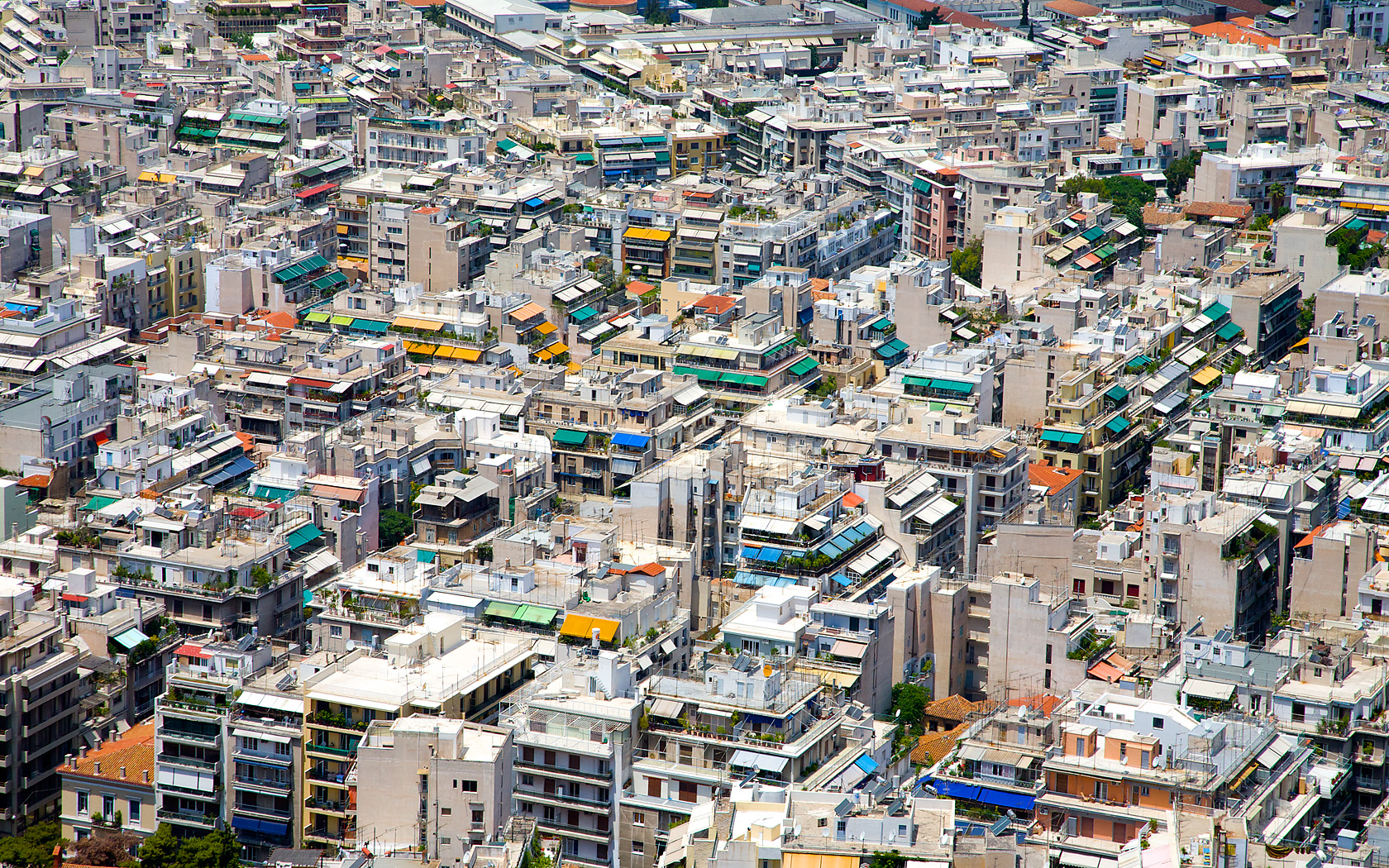 For the traveler who has been to western European capitals such as London, Paris, Berlin and Madrid, Athens can be more than a little jarring. It is a little less polished, and a lot more congested than those other capitals. There are 11 million Greeks and 4 million of them live in Athens. Many of them seem to have cars!
For the traveler who has been to western European capitals such as London, Paris, Berlin and Madrid, Athens can be more than a little jarring. It is a little less polished, and a lot more congested than those other capitals. There are 11 million Greeks and 4 million of them live in Athens. Many of them seem to have cars! There were many things about our brief visit to Alaska that are memorable. But oddly, the profusion of these tasty, orange berries stands out. No doubt there is a name for them but all I know is that I didn't eat enough.
There were many things about our brief visit to Alaska that are memorable. But oddly, the profusion of these tasty, orange berries stands out. No doubt there is a name for them but all I know is that I didn't eat enough.
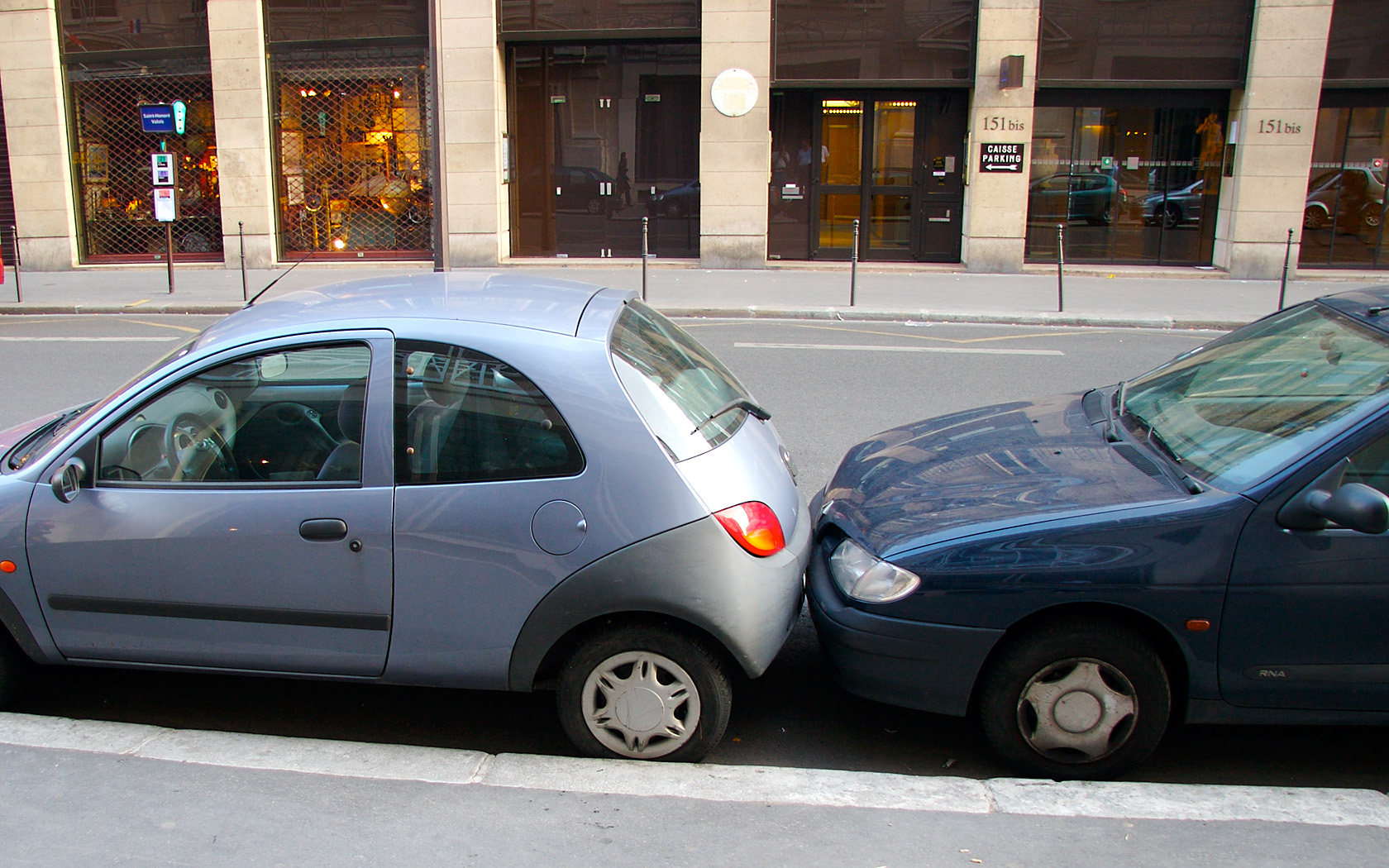 I apologize if you've been lured to my blog this week thinking that "A Week In Paris" would offer a series of spectacular views of the great monuments and buildings in this amazing city. Those shots have been posted (more or less). Two of my favorites:
I apologize if you've been lured to my blog this week thinking that "A Week In Paris" would offer a series of spectacular views of the great monuments and buildings in this amazing city. Those shots have been posted (more or less). Two of my favorites:  This is the most famous street in the world, as seen from the Arc di Triomphe. The Champs-Elyssee has some of the most exclusive stores and restuarants in the world: Chanel, Hugo Boss, Cartier, Louis Vuitton, to name a few. But there is a MacDonalds, too.
This is the most famous street in the world, as seen from the Arc di Triomphe. The Champs-Elyssee has some of the most exclusive stores and restuarants in the world: Chanel, Hugo Boss, Cartier, Louis Vuitton, to name a few. But there is a MacDonalds, too. There is a long history of risky French architecture. For example, the Eiffel Tower was widely criticized when it was built. So, too, was the new entrance to the Louvre, which is what you are looking at in this photo. It was designed by the Chinese American architect I.M. Pei.
There is a long history of risky French architecture. For example, the Eiffel Tower was widely criticized when it was built. So, too, was the new entrance to the Louvre, which is what you are looking at in this photo. It was designed by the Chinese American architect I.M. Pei. There is much that is captivating about a Gothic cathedral like the famous Notre Dame of Paris. The beautiful stained glass and the lofty interior space must have been truly awe inspiring to the 12th century Parisian. They certainly are to me.
There is much that is captivating about a Gothic cathedral like the famous Notre Dame of Paris. The beautiful stained glass and the lofty interior space must have been truly awe inspiring to the 12th century Parisian. They certainly are to me.